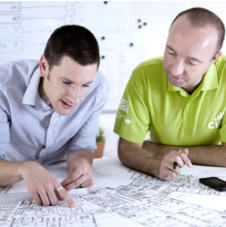Audio System Design Guide - with Chuck Espinoza, AVIXA
The AVIXA 'mad sound guy' himself - Chuck Espinoza - joins the HowToAV team to discuss good practice in audio system design.
Far too frequently in our industry, audio can be the forgotten side of an audiovisual system. HowToAV talks to audio design expert Chuck Espinoza to take an in-depth look at best practice design principles for a professional audio system.
What types of installed audio systems are there?
There are a whole host of different audio systems, with widely varying applications for music, voice, alarms and sound/noise control. These include:
- Concert sound
- Public address / PA system
- Petrol station TV with a speaker
- Soundfield voice reinforcement
- Background music / BGM
- Silent audio for hearing assisted with the induction loops
- Sound and music masking
There are so many different types of audio systems that we have to make sure that they are all designed properly and to the right specification. Also using the correct calculations and following a detailed brief to make sure it is done correctly will help to ensure the best results and clear audible sound reproduction.

Can I plug everything into the same PA system?
It all depends on the type of audio system and the content running through it. Some general Public Address audio systems can be used for voice evacuation, if designed properly. Some can't as they have too small speakers and not a lot of SPL (Sound Pressure Level). For an evacuation system, you need SPL to cut through any background/ambient noise.
What is key to designing audio systems?
The environment and the content is key. For instance if the system is outside there is no reflectivity for sound therefore you will need a more powerful system in comparison to if you were inside. Space has everything to do with how our audio is perceived. It’s all about energy and how it is contained.
How do you measure SPL for an event before hand?
Measuring SPL in an empty room is very different to when the space is populated. Therefore, when designing a public address or sound audio system especially for a big event with lots of people attending; researching is important. Researching other events similar and recording measurements around the building and comparing sizes of the rooms. By benchmarking all these factors you’ll have what a much more accurate estimate of the sytem requirements.
Designing an audio system - start with the source or output?
Start with the source. Once you have what its function is you have content - something that needs amplifying. Typically you start from the front and go through the chain, this allows you to take a look at specifications of equipment. Looking at the specifications of equipment is very important, making sure specifications marry up well for the levels you are at. If the microphone and mixer don’t match then this will present a lot of problems and will start to add noise.
Helping the client understand the importance of audio
We don’t think about audio as it is taken for granted. We adjust ourselves comfortably to the environment e.g. if we are closer we talk softer and louder when further away. Giving enough room and budget to an audio system, getting the calculation for it and not guessing will enable a result known as ‘transparent audio’. Everyone wants the same experience, the same comfort or feeling. So when sat at the back of a room or at the front, the sound is not too loud or quiet. It’s all about making the client realise what levels are good. Loud isn’t always good.
Tips to consider when looking at an audio system
The specifications and the math. DO THE CALCULATION. There is no magic in audio, you can plug it in, turn it on and it makes a sound, but if you want it to sound great or have it not be noticeable – there are calculations for ALL of that stuff!
 Need more help with Audio system design?
Need more help with Audio system design?
CIE is one of the UK's leading providers of professional AV technologies. Our team of AV system designers provide a unique free system design service for our customers to ensure that - where appropriate - the latest IP and AV-over-Ethernet technologies are used to provide high performance, flexible and expandable solutions. View AV-over-IP projects designed and supplied by CIE here.
If you would like to discuss how CIE can support your IP system design, please call us on T. 0115 9770075 or contact us today.
 Got a question for the HowToAV team?..
Got a question for the HowToAV team?..
HowToAV.tv provides a whole host of tips, tricks and technology know-how for the professional audio visual industry.
Subscribe to our YouTube channel now at howtoav.tv for all the latest video casts or send us your questions to [email protected]











